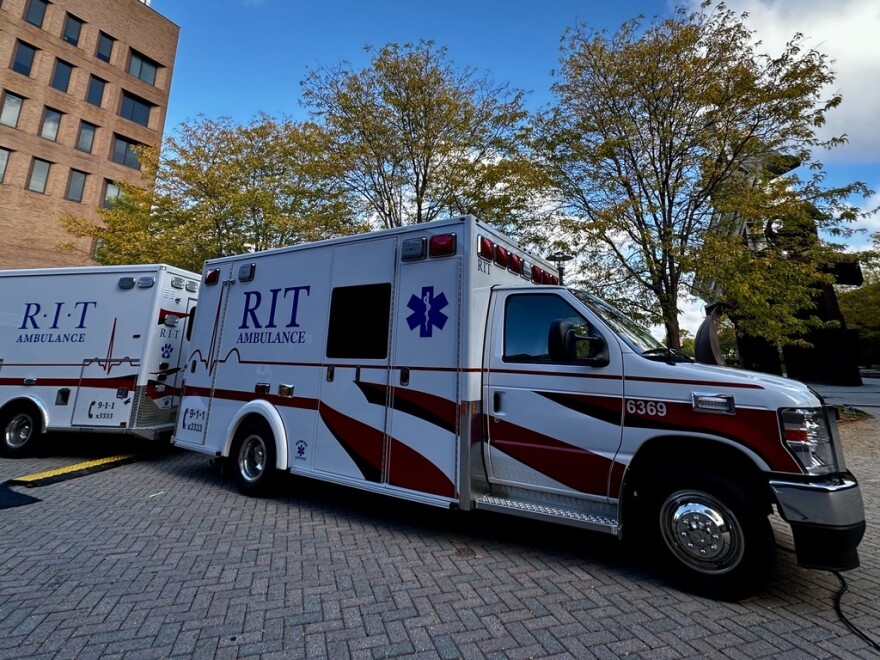Rochester Institute of Technology’s ambulance service is doubling its fleet of vehicles.
The university announced on Tuesday the addition of a second ambulance that was acquired with a $272,000 grant from state Sen. Jeremy Cooney, D-Rochester, through the Dormitory Authority of the State of New York.
It’s the first time since 1981 that the university’s emergency medical service, RIT Ambulance, will have more than one vehicle. The service responds to on- and off-campus calls.
“One of the main things we were seeing is, of course, increasing our ability to respond in all instances, our abilities to cover standbys and cover calls at the same time,” said John Chizmadia, captain of training and clinical care.
“Especially with things like hockey on campus, we have to have an ambulance there," he added. "It's required by the league and by NCAA, so that with only one vehicle that kind of takes us ‘out of service’ in quotes there, because we can't respond to anything else with a transporting vehicle.”
Chizmadia, an alum and current staff member at RIT, is one of nearly 60 people who are part of the emergency response team. He joined in 2014 as a student, and in 2021wrote the initial proposal for an additional vehicle, he said.
This ambulance — a 2025 Ford E450 Demers Mx164 — is “state of the art” he said, with an auto idle shut off, a power lift for a stretcher, and a plug-in system to run power for charging equipment and maintaining temperatures for medications.
In the past five years, the team has received an average of about 550 calls a year, according to RIT data.
Between July 2024 and the end of June 2025, RIT’s ambulance team responded to just over 600 calls, according to data provided by a university spokesperson. Two types of calls occurred most frequently: About 100 were traumatic injuries and falls, and nearly 80 were related to mental health crises.
“If the (emergency response) system is really strained, we can find ourselves going everywhere,” Chizmadia said. “So, we do see overall an increase in mental health calls in the county and worldwide. It's a struggle that we have everywhere. That's how some calls are changing, but I would say the volume is really increasing as well."
Derek Hochbrueckner, RIT Ambulance chief and fourth year dual-degree student in biomedical engineering and industrial and systems engineering, said they receive about one to five mental health crisis calls per week.
“We receive training on how to respond to emotionally disturbed people, that's what we refer to mental health patients as," Hochbrueckner said. "So we utilize the training we've received to keep the situation under control the best we can. If the patient doesn't have any medical need they can go with the sheriff's office to a mental health facility. Or if they do have a medical need, we can take them to a hospital which has a mental health service.”
The school’s emergency medical service formed in 1970, two years after RIT moved to its Henrietta campus. It began as a student-run safety unit and a means to provide non-emergency transport.
In 1981, the unit acquired its first rig— a 1980 Ford Type II Wheeled Coach — and was certified by the state Department of Health.



